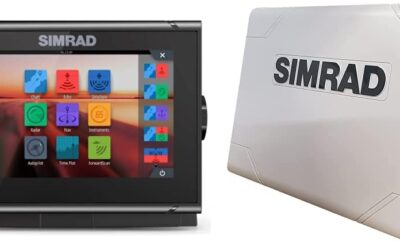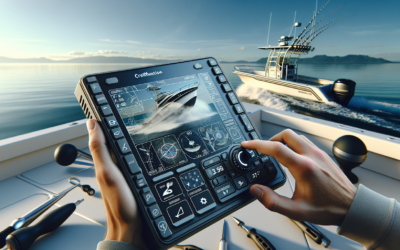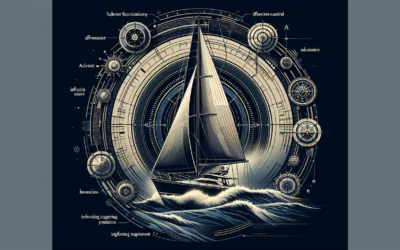Imagine handling a neat piece of tech that empowers you like a dolphin, enabling you to sense what’s hidden beneath you. “Sonar For Safety: Detecting Obstacles And Avoiding Hazards With Fish Finders” is here to show you exactly how that’s done. This article equips you with a firm understanding of how fish finders work and their crucial role in identifying underwater obstacles and hazards, enhancing safety during your nautical adventures. So let’s navigate together through the innovative world of sonar technology, enhancing your sailing experience, from carefree fishing trips to high-stakes ocean expeditions.
Understanding Sonar Technology
Basic concept of Sonar
Sonar, an acronym for Sound Navigation and Ranging, is a technology widely used to explore, detect and navigate in our vast water systems. It was first developed during World War I to combat the risk posed by submarines. The basic concept of sonar involves sending out sound waves and listening for the echoes that bounce back after hitting an object.
How does Sonar work
Sonar technology works on the simple principle of echo-generation and detection. It involves producing a sound wave, usually in water, and listening for the echo returned after it bounces off an object. The time it takes for the echo to return helps calculate the distance of the object, providing vital information about what lies ahead under the water.
Different types of Sonar technology
Sonar technology predominantly comes in two forms: active and passive. Active sonar emits an acoustic signal or pulse of sound into the water. If an object is in the path of this pulse, part or all of the pulse will be reflected back to the sonar transducer. Passive sonar, on the other hand, does not emit its own signal, but rather listens for sounds from marine objects.
The Role of Sonar in Safety
General Safety Role of Sonar
Sonar holds immense importance when it comes to safety, especially in marine environments. It acts as an underwater radar, detecting and warning about obstructions, hazards, and even potential threats underwater that are not visible from above. This drastically reduces the risk of collision and reinforces safety, making it a crucial tool for maritime navigation.
Sonar use in various industries
Apart from being extensively used in the maritime industry, sonar systems have also found a pivotal role in various other industries like oil and gas, energy, civil engineering, geology and marine science. It allows them to look below the water’s surface, mapping the topography, locating resources, observing marine life, and undertaking repair and inspection work.
Preventing Accidents with Sonar
Sonar technology has played a substantial role in preventing accidents, especially in the shipping and maritime industry. It provides critical information about underwater obstructions and potentially hazardous conditions, allowing for timely evasive actions. From detecting icebergs to identifying shallow regions, sonar technology has been a lifesaver.
An Overview of Fish Finders
What is a Fish Finder?
A fish finder is a specialized type of sonar device used by anglers and commercial fishermen to locate fish underwater. It measures the amount of time it takes for the sound wave to bounce back to the device, enabling it to identify objects and movement beneath the water.
Key components of a Fish Finder
The major components of a fish finder include the main display unit, the transducer that sends and receives the sonar waves, and the power source. The transducer is usually mounted on the hull of the boat, and it is the main ‘eye’ of the fish finder, perceiving the world beneath the water.
How Fish Finders work
Fish finders work on the sonar technology we discussed earlier. The transducer sends sound waves into the water. These sound waves spread outwards and downwards in a cone-like manner. When these waves encounter an object or fish, they bounce back. The time taken for the echo to return, captured by the transducer, is translated into an image.
Fish Finders and Safety: An Unusual Pairing
Use of Fish Finders in everyday life
While the basic purpose of fish finders is to locate fish, they have found much wider applications in everyday life, particularly relating to water safety. People have been leveraging their capabilities for uses ranging from locating lost items, helping in water rescues, to obstacle detection and avoidance.
Safety applications of Fish Finders
Fish finders have been extremely useful for safety by detecting underwater obstacles, identifying changes in water depth, and highlighting safe channels for navigation. It can pick up submerged debris, sunken rock formations, and even drifting icebergs, warning in advance to prevent mishaps.
The shift to safety with Fish Finders
Over the years, the application and perception of fish finders have shifted radically from just a fishing instrument to a fundamental safety device. This evolution came naturally as users realized the vast potential these devices had in ensuring safe navigation in uncertain waters.
Detecting Obstacles with Fish Finders
Basics of obstacle detection
Object detection is the process of recognizing objects in the water, like fish, debris, underwater plants, or rocks. By analyzing the echo received, fish finders can efficiently identify these obstacles and map their precise location.
How Fish Finders detect obstacles
Fish finders detect obstacles through the strength of the returned echo. Solid obstacles reflect more sound waves, leading to a stronger echo, which the device translates as a large, solid object. So, not only does a fish finder help to locate objects, but it also provides a basic understanding of what kind of obstacle it is.
Real-life scenarios of obstacle detection with Fish Finders
In real-life scenarios, fish finders have been highly successful in detecting underwater obstacles. For instance, they were instrumental in identifying submerged debris in standing water bodies after the storms, mapping the location of potential hazards during a water rescue operation, and even tracing underwater cables and pipelines.
Avoiding Hazards with Fish Finders
Understanding hazard avoidance
Hazard avoidance implies identifying potential risks or dangers in time to take evasive action. With water bodies, these hazards usually involve submerged obstacles or potentially perilous underwater terrain, which, if not identified timely, can lead to disastrous consequences.
The role of Fish Finders in hazard avoidance
Fish finders play a crucial role in hazard avoidance. They help to see beneath the water surface, thereby identifying any objects or changes in depth that could pose a potential risk. They provide a clear ‘picture’ of what lies below the water, thus enabling better decision making and safe navigation.
Practical examples of hazard avoidance using Fish Finders
Fish finders have been used in numerous situations to avoid hazards. For instance, they have helped sailboats navigate safely through tricky lagoons or shallow water areas. They’ve also been used in larger ships to detect potential hazards, such as icebergs, well in advance to avert Titanic-like situations.
Key Features to Look for in a Sonar-based Fish Finder
Important specifications and features
When considering a sonar-based fish finder, several features are important. This includes its depth capability, screen resolution and size, GPS integration, and frequencies. Higher frequencies are great for scanning in shallow waters, while lower frequencies penetrate deeper waters.
Features that enhance safety
Features that directly enhance safety include chart plotting and GPS tracking, high-resolution screens for accurate imaging, and a good depth range. A dual-beam transducer can also be beneficial as it helps achieve a more comprehensive view of underwater surroundings.
Choosing the right Fish Finder for your needs
Your choice of Fish Finder should depend on your specific requirements. If safety and navigation are your prime concern, go for a model with advanced navigational features. All in all, ensure you choose a device that delivers reliable and accurate information, thereby enhancing your safety on the water.
Advanced Sonar Technologies and Fish Finders
Research and development in Sonar technologies
Research and development in sonar technologies have been pushing the boundaries of what’s possible in understanding the underwater world. Advances in technologies like multibeam sonar, scanning sonar and side-scan sonar have significantly improved the capabilities of devices like fish finders.
How advanced Sonar technologies enhance Fish Finders
Advanced sonar technologies have expanded the capabilities of fish finders beyond the one-dimensional world. For instance, side-scan sonars provide a detailed view of underwater structures, while multibeam sonars provide a full 360-degree view around the boat. This enables a safer and more confident navigation experience.
Impact of these technologies on safety
The introduction of these advanced sonar technologies has had a profound impact on safety. With a more detailed and comprehensive view of the underwater environment, boaters and fishermen can navigate with much more confidence and safety. It has also led to a revolution in underwater search and rescue operations, making them more effective and efficient.
Limitations of Using Fish Finders for Safety
Known limitations and shortcomings
Despite being incredibly useful, fish finders do have their limitations. For one, most standard fish finders may struggle in very deep or very shallow water. Their efficiency is also affected by factors such as water composition, temperature, and the speed at which the boat is traveling.
How to mitigate these limitations
Learning more about how sonar works and the specific capabilities of your fish finder can help mitigate some of these limitations. Manufacturers are continually refining and producing models that can operate accurately in a broader range of conditions, helping to overcome some of these issues.
Future improvements in the field
As technology evolves, we can expect even more advanced fish finders that offer enhanced precision, range, and functionality. Future improvements reflecting better connectivity and sharing of data would only enhance safety for all water enthusiasts, aiding in navigation and the quick detection of potential hazards.
Conclusion: The Potential for Sonar Safety
Reflection on the use of Fish Finders for safety
Reflecting on the use of fish finders for safety, it’s clear that they’ve come a long way from being just another fishing tool. They have emerged as a vital safety device, guiding vessels flawlessly through uncharted waters, detecting possible threats and obstacles, all due to the power of sonar technology.
Predictions for the future of Sonar safety
As technology advances, we can predict an even more significant role for sonar in safety. With the ongoing advancements in sonar technology, it is conceivable to foresee fish finders becoming an integral part of water safety measures, paving the way for safer and more confident water exploration.
Final thoughts on Sonar and safety implications
In conclusion, the safe navigation of the seas and water bodies will continue to be a crucial aspect for all of us. With the assistance of sonar technology and tools like fish finders, we certainly have the capability to make water navigation safer. It, therefore, becomes imperative to leverage such technological advancements to their full potential and ensure a safer future for all mariners and water explorers.









